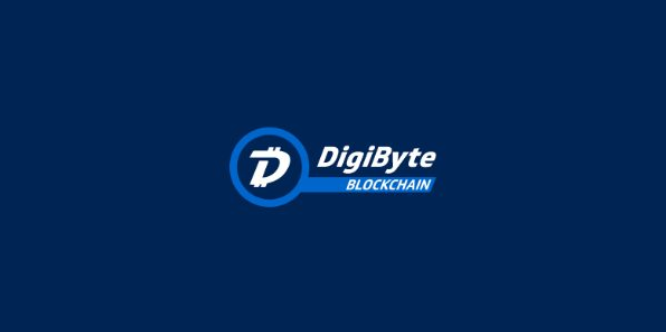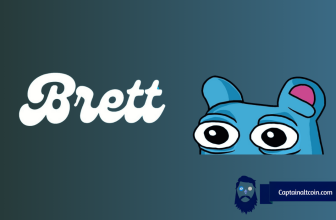
What you'll learn 👉
Table Of Contents
The crypto-craze is kicking in again after a brief ‘holiday discount‘. Many of the major gains we’re seeing are emerging from lesser-known altcoins, and anyone who’s looking for smaller, exciting altcoins to invest in will usually scan through CoinMarketCap’s Top 100.
CoinMarketCap is one of the most famous sites in the world of cryptocurrency, where the main page shows a list of all major cryptocurrencies by market cap. It gives access to a large amount of information on the market, with new coins jostling to edge upwards towards the likes of Ethereum, Ripple, and the fabled Bitcoin. DigiByte has been around for quite some time and has launched into the #37 spot with a market cap of $682M (at the time of writing).
DigiByte was founded in 2014 and slumbered for years until its recent eruption onto the market, surging virtually 1,000% in less than a month, including a 53% bull run in just 25 minutes the morning of Dec. 23 (PST).
DigiByte’s supporters argue that it’s the sleeping giant of cryptocurrency and it boldly markets itself as a better alternative to Bitcoin, so what’s going on? According to its fans, it’s on the cutting edge of crypto-technology, but why hasn’t DigiByte overtaken the king of cryptos?
What Does DigiByte Do?
DigiByte is another digital asset that exists on its own decentralized public blockchain and hosts a network that’s faster, more scalable, and more secure than other major currencies. DigiBytes are digital assets that cannot be hacked, destroyed or counterfeited. This makes them perfect for protecting objects of value like currency, information, property or important digital data. It was created as a superior alternative to Bitcoin, and its fans argue that over time its superior technology will win out against Bitcoin, Litecoin, and other top digital cash options. The DigiByte blockchain is spread over a 100,000+ servers, phones, computers, and nodes across the globe, aiming for the ultimate level of decentralization.
In essence, DigiByte exists as a direct challenge to the monopolies of the leading money transfer operators – Western Union and PayPal, which process over 1 million transactions and payments per day. Bearing this goal in mind, the team has created a set amount of 21 billion DigiByte coins, which will be mined in 21 years (17 years left), which is 1000 times more than BTC. In theory, this makes DigiByte a better method of payment because purchasing a cup of coffee won’t be confusing decimals like 0.03, it could just be 30 DigiBytes. There are currently 8.1 billion DGB in circulation, which can be bought on most major exchanges or you can join a mining pool to mine it.
What does DigiByte bring to the table to achieve this? Whereas Bitcoin’s average block time sits at 10 minutes, DigiByte has the fastest block speed of any public UTXO blockchain in the world today with 15 second block timings. DigiByte’s faster block time means transactions get processed and confirmed much faster on its network, but faster block time comes with scalability issues as each node on the network must maintain the entire history of the blockchain in order to confirm new transactions. To counter these challenges, DigiByte was the first cryptocurrency to implement segregated witness (SegWit), which allows for several innovations to occur on top of the DigiByte blockchain such as cross chain transactions and single confirmation transactions. The project has an absolute need for speed, with the block time doubling every 2 years, and DigiByte plans to reach the 2,000 transactions per second mark set by Visa and possibly surpass it. Mind you, DigiByte has current rate of 560 p/s, which is pretty fast when compared with Bitcoin’s current 8 transactions per second.
DigiByte has established a reputation for being on the cutting edge of crypto-development and its peripheral interest was to bridge the gap between gaming and digital currencies, with players being rewarded in-game with the DGB token. Things started off with a bang, and there was much talk and debate of DigiByte being integrated into many games such as Minecraft, League of Legends, World of Warcraft, and Nintendo and they were working toward becoming a house hold name. DigiByte Gaming was launched at the end of November 2015, but the team decided to shut down DigiByte gaming in May 2017 after serious technical issues.
The DigiByte Team
DigiByte’s credibility rests on the shoulders of Jared Tate, who developed DigiByte in 2013 and launched the genesis block in January 2014. DigiByte was launched without an initial token sale and with little fanfare, and at the time, it was one of only a handful of public blockchain projects.

Tate is an established entrepreneur with a strong public profile and has a significant presence both in the physical and online world. After the launch, Tate dedicated himself full time to DigiByte’s development and since then, funding for the project has come through donations to the DigiByte foundation.
It’s important to note that the DigiByte project is unlike Bitcoin in the sense that it’s an open-source project and its team is composed of dozens (possibly more) of contributors around the world. Speaking of other people working on the DigiByte team, you won’t even find the core members of the project listed on the whitepaper because there is no whitepaper. DigiByte’s official stance is “we want to be doers. Not white paper pumpers. It is much better to under-promise and over-deliver.” As I already said, it’s difficult to find much out about the staff supporting the project, but little digging on LinkedIn turned up a total of five developers (incluidng Tate) who claim to work for DigiByte.
One more thing worth noting is that the “team” is supposedly accessible across its vast array of social media channels – Facebook, YouTube, Twitter, and more.
Over the past year, Tate has said he’s working on setting up the Foundation, which will focus on education, outreach, and development.
DigiByte History
Jared Tate was dissatisfied with the security and speed of Bitcoin so he set out with the bold notion of creating something better. Tate and his team started developing DigiByte back in 2013, and DigiByte launched its genesis block on January 10th, 2014. At launch, it used a single proof of work algorithm, but soon after, DigiByte conducted a hard fork to introduce a total of five proof of work algorithms.
The first breakthrough for DigiByte was just a month after release – DigiShield hard fork, which allowed for the DigiByte blockchain to protect against multi-pools that mine large numbers of DigiByte at a low difficulty. This is a valuable technology and other cryptocurrency blockchains such as Dogecoin and Zcash have added it to their blockchain systems with the help of the DigiByte team.
The second big win for DigiByte was in 2016, when Microsoft added DigiByte to Azure, which is Microsoft’s public cloud computing platform that provides a range of cloud services, including those for compute, storage, analytics and networking. Microsoft also nominated the crypto for BizSpark, which is their program to help startups get the software, support, and services they need to be successful.
These are definitely promising signs. However, the coin has been overtaken by dozens of faster-growing projects. Also, DigiByte is still a relatively obscure currency compared its competitors and has yet to make truly significant steps towards mainstream adoption.
The coin’s value has slumbered for years, but it started turning heads in December 2017 when John McAfee, a popular crypto-investor, tweeted about DigiByte as a company worth watching. DigiByte achieved a 120% price surge in 12 hours, hitting headlines globally.
DigiByte Competitors and Challenges
The biggest question mark over this project is not its vision. It is its ability to pull it off and only time will tell whether or not this project will be successful. With no whitepaper, significant corporate partnerships, and without team members dedicated to marketing, project management, and community outreach, it’s difficult to see how will DigiByte slingshot its way into competing with Bitcoin, or even settle for second place.
Without a doubt, Bitcoin, the world’s biggest cryptocurrency, is DigiByte’s biggest arch-nemesis and you can often hear that “DigiByte is Bitcoin 2.0,” or “DigiByte is Bitcoin on steroids.” The entire concept of the DigiByte project is founded on being a leaner, faster, meaner version of Bitcoin.
When it comes to what’s under the hood, DigiByte is undoubtedly better than BTC in many ways. Its biggest asset is its speed, where transactions are fully confirmed after 1.5 minutes, which is much more useful for real life purposes like purchasing something in a shop. On the other hand, Bitcoin transactions take at least 1 hour to settle. Not to mention how the number of transactions taking place simply dwarfs Bitcoin, where DigiByte’s current rate is 560 p/s in contrast to Bitcoin’s 8 p/s. Lastly, with DigiByte you have the ability to choose to mine on five separate algorithms (Scrypt, SHA256, Quibit, Skein, and Groestl) compared to Bitcoin’s 1. This means that mining DigiByte is far more decentralized. Also, 3 of these algorithms are ASIC resistant. This allows for greater decentralization, because anybody with an average PC can contribute to mining by using one of these 3 algorithms, which reduces the chance of a 51% attack.
As I already said, DigiByte has established a reputation for being on the cutting edge of crypto-development, but there are countless problems that pose a threat to its success – not only its competition with Bitcoin, but simply its ability to propagate the cryptocurrency market and be directly adopted into mainstream society.
Read more about other interesting coins we wrote about. What is NXT coin? Here is a guide about SIA coin. For all the stoners among our readers – reading about potcoin will probably be a big joy. Many would argue that Cardano – ADA is the next bitcoin. Einsteinium coin has an interesting story behind it – read more about it on the link. For all the green energy and eco-concious guys Burst coin is great concept that might solve most common problems in this sector.
How to Buy and Store DigiByte
The easiest way to acquire your first DigiBytes is to buy them on an exchange, such as Poloniex, Bittrex, Cryptopia, or Kucoin. Click here to find a full list of exchanges where you can purchase DGB.
Depending on which exchange you use, DigiByte (DGB) can be bought for Bitcoin (BTC), Ethereum (ETC), or Tether (USDT). If DGB is your first crypto investment, you will need to visit a fiat/crypto exchange, which will allow you to deposit ‘normal’ currencies such as USD, GBP, or EUR. Once you have made a deposit to the exchange, you can then use the funds in your exchange account to buy any of these currencies. The most popular fiat/crypto exchanges are Coinbase, Changelly, and CEX.
After exchanging any of these three currencies for DGB, you are ready to transfer your funds to the official DigiByte wallet, which will require you to run a full node and store the DigiByte blockchain. Click here to download the official DigiByte wallet.
Conclusion
DigiByte is significantly faster, more secure, and more decentralized than Bitcoin, and all these factors hold good value making DigiByte a very efficient system that can offer a better alternative to Bitcoin. The vision is solid. However, it is heavily dependent on the profile of its founder, Tate, and is certainly lacking a cohesive presence.
One concern we have with DigiByte is that a whitepaper cannot be found, but this is also indicative of its entirely unorthodox nature. To date, DigiByte is on the cutting edge of crypto-technology, and the coin appears to be technically superior to Bitcoin.
On the other hand, DigiByte’s adoption over the past four years has been slow, and for this project to really move forward, it will need a more focused approach, which will require some significant corporate, government, or crypto-advocate backing – all of which will invariably require more of a transparent existence.
According to Digibyte’s website, there are some interesting things on the horizon between now and 2020, and among the projects to look forward to are DigiHash, Digi-ID, the Emma AI, Digibot, and DigiMessenger. Also, Tate, the CEO, has promised to focus on public outreach and the DigiByte Foundation this year, which will focus on education, outreach, and development.
Visit their website if you need more information about DigiByte.
You might have come across some pump and dump groups on Telegram, Discord or other apps. Read here what is pump and dump and how it works (be very careful, it is a scam)! Everybody is talking about FOMO – but what does that mean? See here to find out.
You can’t buy it directly for fiat on any exchange. You can choose the best bitcoin exchange for your region and buy BTC there, then trade it for DGB on exchanges. Learn here how you can instantly convert altcoins to bitcoin and vice versa.
Our recommendation is always check if Coinbase is available for your country and buy there – as it is by far the safest and best regulated bitcoin exchange. Coinbase is legit and safe cryptocurrency exchange.
If your country is not available on Coinbase – check for exchanges that are good Coinbase alternatives (such as Cexio and Indacoin – see here Cex.io review and Indacoin review) and buy BTC on one of those exchanges. You can always exchange your coins on Changelly (see if Changelly is legit), instantly and directly to BTC.
Best and safest option to store your coins is to download an official coin wallet and store it on a hardware wallet – our recommendation is just go and buy Ledger Nano S, it is the safest option.You can read our review of Ledger Nano S or check out other best hardware wallets here.







